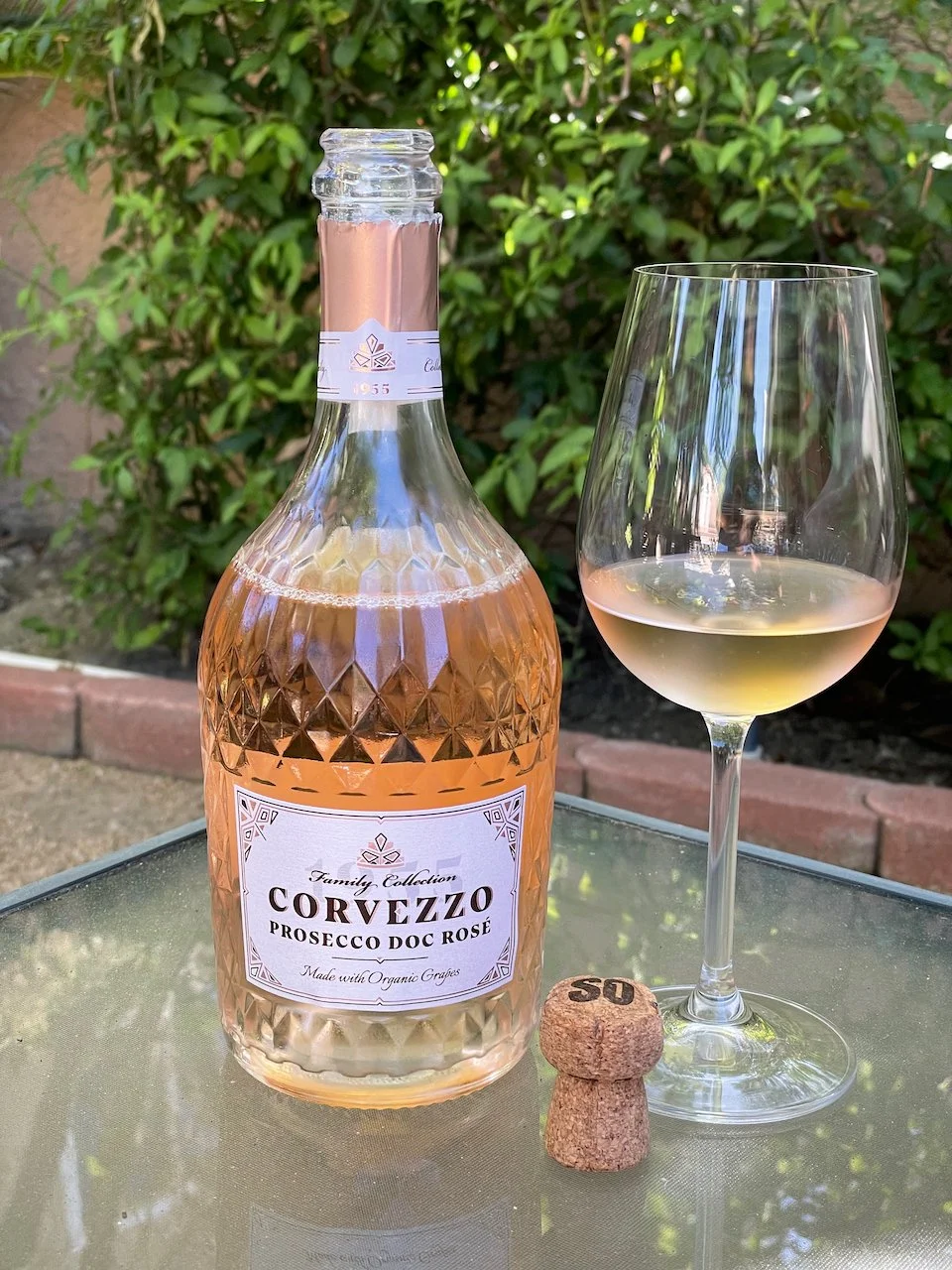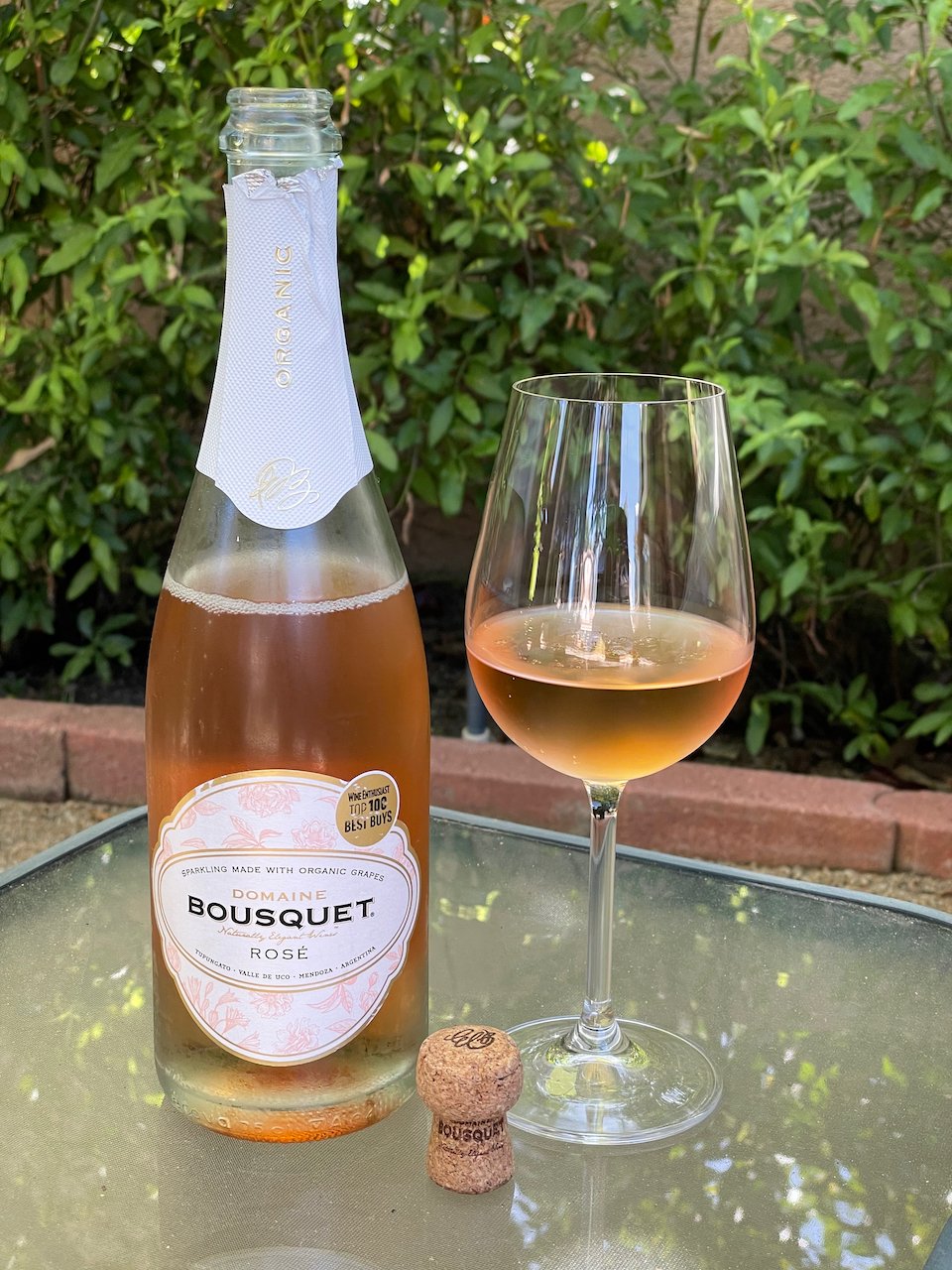Corvezzo Prosecco DOC Extra Dry Rosé ($13)
Corvezzo (“kor-VETZ-zoh”) is the leading name in organically grown, vegan wines from northeast Italy’s Veneto region.
Family-owned and run, Corvezzo has the largest acreage in Italy of certified organic Glera and Pinot Grigio grapes.
Giovanni Corvezzo, owner/winemaker, believes organic farming gives his wines better balance. According to Giovanni, his wines have not only adapted to organic farming, they have also thrived, becoming stronger, with better balance and producing higher quality fruit.
Corvezzo Prosecco Rosé is made with organic & vegan grapes consisting of 85% Glera and 15% Pinot Nero (Pinot Noir). It is produced via the Charmant Method with Fermentation lasting 60 days.
This Corvezzo Prosecco Rosé is pale salmon in color. On the nose it has very delicate fruit aromas of melon, strawberry, raspberry and floral notes. On the palate this Prosecco is light-bodied with citrus notes of grapefruit and strawberry, good acidity and finishes dusty dry. [ABV: 11.5, RS: 12 g/L]
Corvezzo Prosecco Rosé is certified fully organic in Europe, covering both viticulture and production in the winery. But, because of a difference in regulations, U.S. labels state that it is “Made with organic & vegan grapes.” Regardless, this Corvezzo Prosecco Rosé is light and tasty and perfect for sipping during these warm summer months. And, it this week’s Behind the Cork™ Wine of the Week! Cheers!
Disclosure of Wine Sample Submission: I received this sample at no cost for review. The opinions expressed are entirely my own.
Media Sample Provided by Corvezzo






